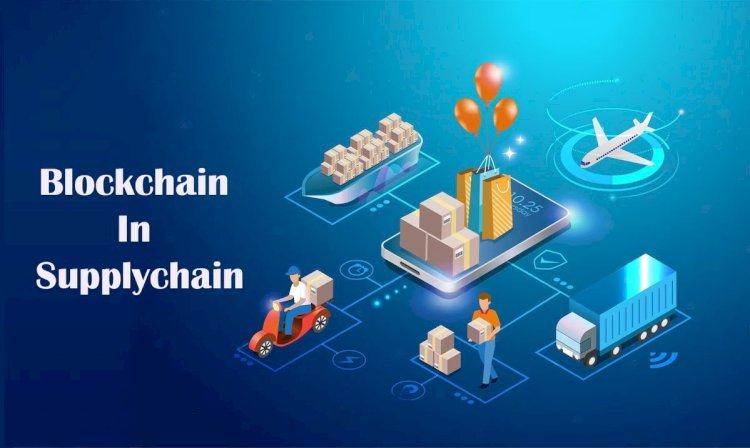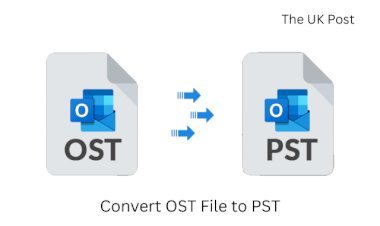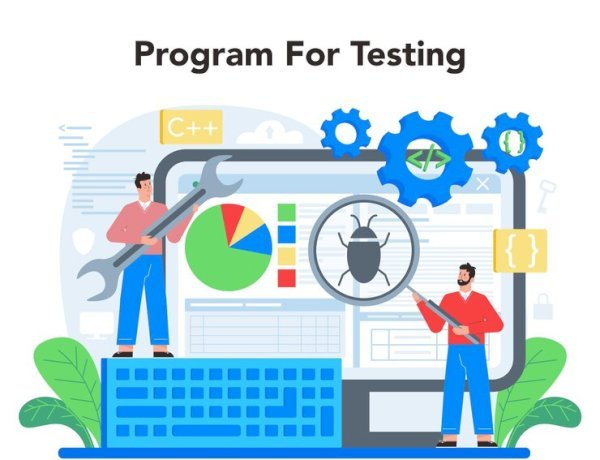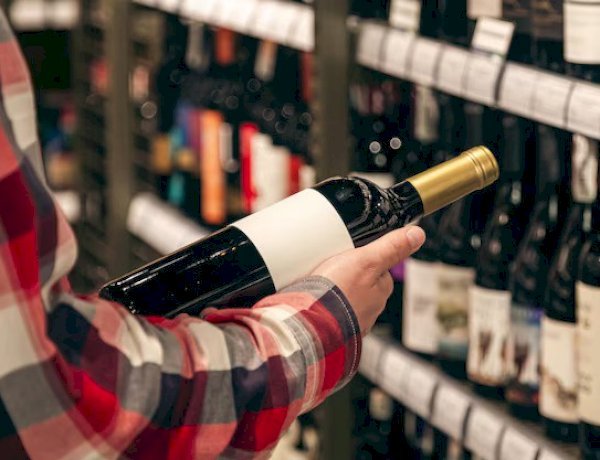Blockchain Technology in Supply Chain | Benefits, Uses & Examples (2025)
Learn how blockchain technology in supply chain improves transparency, prevents fraud, and enhances efficiency with real-world applications in 2025.

In 2025, blockchain technology in supply chain has become one of the most transformative tools in global logistics and trade management. Traditional supply chains often face issues like poor visibility, counterfeit goods, delayed information sharing, and manual inefficiencies. Blockchain changes this by providing a transparent, tamper-proof, and shared digital record of transactions.
This technology allows every stakeholder — from manufacturers to end consumers — to access trusted and verifiable data about a product’s journey. As industries like food, pharmaceuticals, manufacturing, and retail continue to adopt blockchain, its potential to enhance transparency, improve efficiency, and reduce fraud is becoming clear.
In this article, we’ll explore how blockchain technology in supply chain systems works, its benefits, real-world examples, challenges, and what the future holds.
What Is Blockchain Technology in Supply Chain?

Image source: Pinterest.com
Blockchain technology in supply chain means using a decentralized ledger system to record and verify each transaction and movement of goods. Each record (or “block”) is securely linked to the previous one, forming an immutable chain of data that is visible to all authorized participants.
Unlike traditional databases managed by one organization, blockchain is distributed across multiple participants, eliminating the need for middlemen and reducing data manipulation.
In supply chains, it records critical events such as:
-
Production of raw materials
-
Quality inspections and certifications
-
Shipment details and customs clearance
-
Storage conditions and delivery records
Smart contracts — automated rules built into the blockchain — trigger specific actions like releasing payment once goods are verified as delivered. IoT sensors often complement blockchain by feeding real-time data (like temperature or location) into the system.
By combining automation and transparency, blockchain technology in supply chain ensures authenticity, prevents fraud, and provides accountability at every stage of product movement.
Benefits of Blockchain Technology in Supply Chain

Image source: Pinterest.com
The adoption of blockchain technology in supply chain brings several measurable advantages to organizations.
Improved Traceability
Every product’s movement, from origin to final destination, is recorded permanently. This enables quick identification of defective batches or counterfeit products. For example, food companies can trace contaminated items within seconds instead of days.
Enhanced Transparency and Trust
Each participant in the supply chain views the same verified data. This reduces disputes, reconciliations, and delays caused by inconsistent records. Trust is built through data integrity rather than human assurance.
Fraud and Counterfeit Prevention
Because blockchain data cannot be altered without consensus, it becomes nearly impossible for bad actors to falsify records or insert fake products. This is particularly valuable in pharmaceuticals and luxury goods.
Cost and Time Savings
Automating verification and eliminating redundant paperwork reduces operating costs. A 2025 Deloitte report found blockchain can cut supply chain administrative costs by up to 20%.
Better Collaboration and Efficiency
Blockchain connects suppliers, manufacturers, and retailers on a single platform. Shared visibility eliminates data silos and streamlines workflows.
In short, blockchain technology in supply chain improves visibility, reduces risk, and creates a more efficient and trustworthy global trade environment.
Real-World Applications of Blockchain Technology in Supply Chain

Image source: Pinterest.com
The practical uses of blockchain technology in supply chain are growing rapidly across industries.
-
Food Safety: Walmart and Carrefour use blockchain (via IBM Food Trust) to track food items from farm to shelf. What once took seven days to trace now takes seconds, improving consumer safety.
-
Pharmaceuticals: Companies like Pfizer use blockchain to verify drug authenticity and ensure compliance with serialization laws. It prevents counterfeit drugs from entering the supply chain.
-
Luxury Goods: Brands such as LVMH and De Beers use blockchain-based certificates of authenticity, giving customers proof of origin and ethical sourcing.
-
Shipping and Logistics: The TradeLens platform (IBM–Maersk) demonstrated blockchain’s ability to digitize customs paperwork and shipping data, reducing delays and fraud.
-
Cold Chain: IoT-enabled blockchain systems ensure vaccines or perishables stay within safe temperature limits during transportation.
-
Trade Finance: Banks and logistics companies use blockchain to simplify bills of lading, letters of credit, and other documentation, cutting processing time by up to 50%.
These examples prove blockchain is moving from pilot projects to real, high-impact supply chain solutions.
How Blockchain Improves Transparency and Traceability

Image source: Pinterest.com
Transparency and traceability are at the heart of blockchain technology in supply chain systems. Here’s how the technology delivers them in practice:
-
Immutable Data Records: Once entered, data cannot be changed or deleted. This builds a permanent history of product movements and ownership.
-
End-to-End Visibility: From sourcing to consumer delivery, each event is visible to authorized stakeholders.
-
Real-Time Monitoring: IoT sensors feed live data into blockchain ledgers — for example, temperature and humidity during shipment — ensuring accurate reporting.
-
Faster Recalls: In case of contamination or defect, companies can quickly identify the affected batch and source.
-
Consumer Trust: Many companies now let customers scan QR codes to verify product origin and sustainability credentials.
Governments and trade organizations are also encouraging blockchain adoption to improve transparency in procurement and customs. This technology not only enhances business efficiency but also supports compliance and public trust.
Challenges in Implementing Blockchain in Supply Chain

Image source: Pinterest.com
Despite the benefits, adopting blockchain technology in supply chain is not without challenges. Some of the most significant barriers include:
-
Integration with Existing Systems:
Most companies rely on legacy ERP and WMS systems. Integrating these with blockchain requires time, technical expertise, and investment. -
Data Accuracy:
Blockchain can secure data, but it cannot verify false inputs. If wrong information is entered, it stays in the record. This is known as the “garbage in, garbage out” problem. -
Privacy Concerns:
Supply chain partners may hesitate to share sensitive business data. Permissioned blockchains solve part of this issue but add complexity. -
Scalability:
Large supply chains process millions of transactions daily. Managing that volume efficiently requires strong architecture and sometimes off-chain storage. -
Cost and Participation:
Blockchain works best when multiple stakeholders join. Convincing everyone to participate and share costs can be difficult. -
Lack of Standards:
Many blockchain platforms use different frameworks, leading to interoperability problems between networks.
Addressing these issues through strong governance, clear incentives, and gradual implementation is essential for long-term success.
Read Also: Top 10 Best Crypto Learning Sites in 2025 | Learn Blockchain, Web3 & Bitcoin Safely
Best Practices for Successful Implementation

Image source: Pinterest.com
Companies planning to deploy blockchain technology in supply chain should follow key best practices to maximize success:
-
Start with a Pilot Project: Focus on one high-impact use case like tracking perishable goods or verifying luxury items before scaling globally.
-
Ensure Data Quality: Combine blockchain with IoT sensors, barcodes, or third-party verification to maintain accurate inputs.
-
Choose the Right Blockchain Type: Decide between public, private, or hybrid systems based on privacy, scalability, and transaction cost needs.
-
Collaborate Early: Engage suppliers, logistics partners, and customers early to align expectations and share governance.
-
Integrate with ERP Systems: Make sure blockchain platforms connect smoothly with existing enterprise software to avoid data duplication.
-
Set Measurable Goals: Define clear KPIs such as reduced recall time, faster settlements, or improved compliance efficiency.
Following these steps ensures blockchain adoption delivers both operational and financial value.
Future Trends in Blockchain Supply Chain Systems

Image source: Pinterest.com
The future of blockchain technology in supply chain will likely include deeper integration with other advanced technologies. Artificial Intelligence (AI) will analyze blockchain data to predict supply disruptions before they happen. Digital twins — virtual representations of products or processes — will use blockchain data for real-time synchronization between physical and digital worlds.
Tokenization is also gaining traction. Physical goods, shipments, or invoices can be represented as digital tokens on blockchain, improving liquidity and simplifying trade finance.
Sustainability tracking will become another key use. Companies are already using blockchain to document ethical sourcing, carbon emissions, and recycling rates. Customers can verify sustainability claims instantly.
Moreover, governments in regions such as Singapore, the European Union, and the U.S. are supporting blockchain-based customs and logistics pilots, pushing the technology toward standardization and mass adoption.
By 2030, blockchain is expected to be an integral layer of digital supply chains, powering transparency, automation, and resilience worldwide.
Industry Case Studies

Image source: Pinterest.com
Several successful case studies highlight how blockchain technology in supply chain delivers real-world impact.
IBM Food Trust and Walmart
Walmart uses IBM Food Trust to trace produce across its food network. The system reduced trace time for contaminated food from seven days to 2.2 seconds. This not only improved safety but also minimized waste during recalls.
Port of Rotterdam
The Port of Rotterdam implemented blockchain-based documentation to streamline customs clearance. The system reduced paperwork by 25% and cut clearance times by nearly a day per shipment.
Pharma Blockchain in India
In India, pharmaceutical firms are working with blockchain networks to comply with serialization mandates. The system tracks each medicine from factory to pharmacy, preventing counterfeiting and ensuring regulatory compliance.
These examples confirm that blockchain technology in supply chain management is no longer experimental but a proven driver of transparency and efficiency.
Conclusion
In conclusion, blockchain technology in supply chain is redefining how goods and data move across the world. It provides unmatched visibility, enhances trust, reduces fraud, and simplifies documentation. Industries like food, pharmaceuticals, logistics, and luxury goods are already seeing measurable benefits.
However, successful implementation requires addressing integration, data accuracy, privacy, and collaboration challenges. The key is to start small, involve partners early, and focus on accurate, automated data collection.
As blockchain merges with IoT, AI, and sustainability systems, its role will expand beyond traceability to become the backbone of next-generation supply chains. Companies that adopt early will build more efficient, transparent, and resilient operations — gaining a clear competitive advantage in global trade.
FAQs
Q1: What does blockchain technology in supply chain mean?
It refers to using distributed ledger systems to record and verify every transaction, shipment, and event in a product’s life cycle, ensuring transparency and trust among all participants.
Q2: Which sectors benefit most from blockchain in supply chain?
Food safety, pharmaceuticals, luxury goods, logistics, and trade finance sectors benefit the most because they require product authenticity and real-time tracking.
Q3: Is blockchain expensive to adopt?
Initial setup costs exist, but savings from automation, faster settlements, and reduced fraud often outweigh these expenses over time.
Q4: How does blockchain prevent counterfeiting?
Each product is assigned a verifiable digital record stored on the blockchain, making duplication or manipulation almost impossible.
Q5: What is the future outlook of blockchain in supply chain?
The future involves integration with AI, IoT, and sustainability tracking, leading to smarter, faster, and more ethical global supply chains.




























